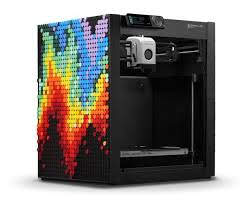3D Printing: Ender 3 Series vs. Bambu Labs P1S
Introduction
3D printing technology has seen significant advancements over the years. This blog post will compare two popular 3D printers: the Ender 3 series, which represents the technology of its time, and the modern Bambu Labs P1S.
Ender 3 Series
The Ender 3 series, produced by Creality, was a popular choice for desktop 3D printing. The series included several models, each with its unique features.
Key Features
- Extrusion Technology: The Ender 3 series offered two lines of printers, the Neo and S1, which differed in their extrusion technology. The Neo series used Bowden extruders, which are lightweight and can print quickly. The S1 series used Direct extruders, which can handle a wider variety of materials, particularly flexible filaments.
- Material Compatibility: The S1 series had an "all metal" hot end, allowing it to accommodate 3D print materials that require higher softening temperatures.
- Cost and Accessibility: The Ender 3 series was known for its affordability and ease of assembly. It also offered automated leveling, silent stepper motors drivers, power loss handling, and handy knobs to adjust belt tension.
Bambu Labs P1S
The Bambu Labs P1S represents the current state of consumer 3D printing technology.
Key Features
- Out-of-the-Box Performance: The P1S works right out of the box, with setup taking just 15 minutes.
- High-Temperature Filament Printing: The P1S has an enclosed body, allowing for high-temperature filament printing.
- Multi-Color Printing: The P1S can print in up to 16 colors with the AMS system.
- Speed: The P1S has an acceleration of up to 20000 mm/s², allowing it to print a benchy in just 18 minutes.
- Remote Monitoring: The P1S includes a built-in camera for remote monitoring and time-lapse.
Conclusion
While the Ender 3 series offered a range of features and affordability, the Bambu Labs P1S showcases the advancements in 3D printing technology, with its out-of-the-box performance, high-temperature filament printing, multi-color printing, and high-speed printing. As technology continues to evolve, we can expect even more impressive features in future 3D printers.
